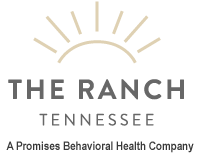The pain, struggle and trauma associated with drug addiction can be difficult to put into words. Art therapy is the practice of engaging a client through the use of creative media, including collage, painting, drawing, pastels, sculpture and other forms of expression as a part of a treatment program. Recovering addicts, troubled teens and anyone suffering from PTSD or other mental and emotional distress can benefit from art therapy. Often, art therapy is used in conjunction with other forms of therapy, including group and talk therapy. The American Art Therapy Association (AATA) defines art therapy as, “the therapeutic use of art making, within a professional relationship, by people who experience illness, trauma or challenges in living, and by people who seek personal development.” Unlike your typical art class, an art therapy session focuses on the client’s thoughts and emotions, working toward developing self-expression rather than a set of art skills.
History
Expressing oneself through creative media has been a part of human history for thousands of years. Before the invention of writing, art is believed to have been the primary form of long-term communication. However, the form of art therapy as an official psychotherapeutic practice did not emerge until very recently. In the 1940s, a number of professionals working independently began to develop, or at least recognize, art as a therapeutic practice. Some, like Edward Adamson of Britain, simply provided clients with art supplies and remained uninvolved with the results, while others, like Dr. Edith Kramer, engaged with their clients, helping them to interpret meaning from their artwork. Today, art therapy is a recognized and respected form of psychotherapy that can be found in a wide range of clinical settings, including prenatal classes, mental health centers, prisons, grief counseling and drug rehab programs.
Why Art?
For the recovering addict, art allows for a new form of communication and self-reflection. It is especially effective for those who struggle with internal conflicts and difficulties, no matter what artistic talent or experience they may already have. When other forms of communication fail, like talk therapy or counseling, art can play a huge role in helping the client make an important breakthrough, build trust with a therapist, and gain a feeling of self confidence and self worth.
How It Works
The healing, meditative process of creating art has been well known for a very long time, but it wasn’t until the last couple of decades that scientists have focused on understanding exactly how it works to promote healing. In fact, research into this form of psychotherapy is still just getting started. There are, however several recent studies that explore art therapy. What scientists do know is that, like other forms of alternative therapy, including outdoor and horticultural therapy, art therapy reduces stress and anxiety, as evidenced by decreased levels of cortisol in the body. Not only does this help the client feel better overall, it allows for increased feelings of trust and a change in perceptions of the pain and anxiety associated with withdrawal. In addition, the process of creating visual art appears to involve multiple parts of the brain. It involves hand-eye coordination, which accesses the “creative” right side of the brain. In other words, art therapy allows the client to process the very abstract, such as fears, internal struggles and emotions, into something more concrete that both the client and the therapist can analyze and appreciate.
Specific Art Therapy Sessions & Assessments
The way an art therapist uses art to help a client can range widely, depending on the client’s condition and preferences. There are, however, a number of art sessions and techniques that are favored by therapists to help facilitate the creative and healing process, especially among recovering addicts. Some of the most popular include:
- Doll building: The practice of building or refurbishing a doll seems simple, but it can hold very deep meaning to a client recovering from addiction. As the patient’s doll—once a blank slate or broken, discarded toy—changes and improves with each session, it reflects the addict’s own recovery process. Therapists using this technique often remark on its effectiveness, as it helps clients realize their own capacity for renewal and growth.
- Road drawing: Road drawing is the simple practice of drawing or painting a road. In a way, it functions as a depiction of the client’s “life path.” The resulting drawing, from roadside objects to features of the road itself, are then explored and interpreted with the help of the therapist.
- Altered book: Similar to doll building, the therapeutic art of altering an old book with various art media allows recovering addicts to explore self-expression as they journey through the process of recovery. This therapy assessment can take many weeks, or even months, and allows clients to journal their inner process in a free, abstract way.
The aim of art as therapy is to help enhance the addict’s recovery process, allowing him or her to explore and express struggles and internal feelings in a new and positive way. No matter what the age, life history or artistic ability that a recovering addict may have, this unique form of therapy can help prevent relapse and may be continued for many years after the patient leaves rehab. For more information, and to find a certified art therapist near you, the American Art Therapy Association is a great resource.

